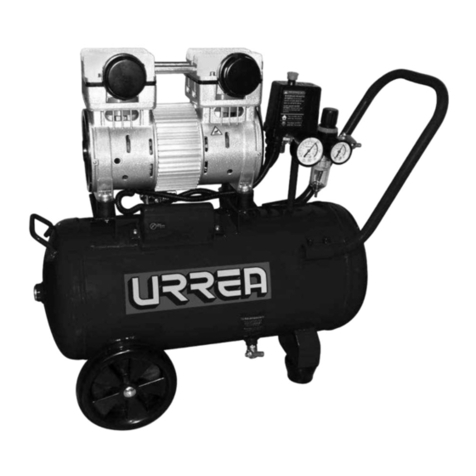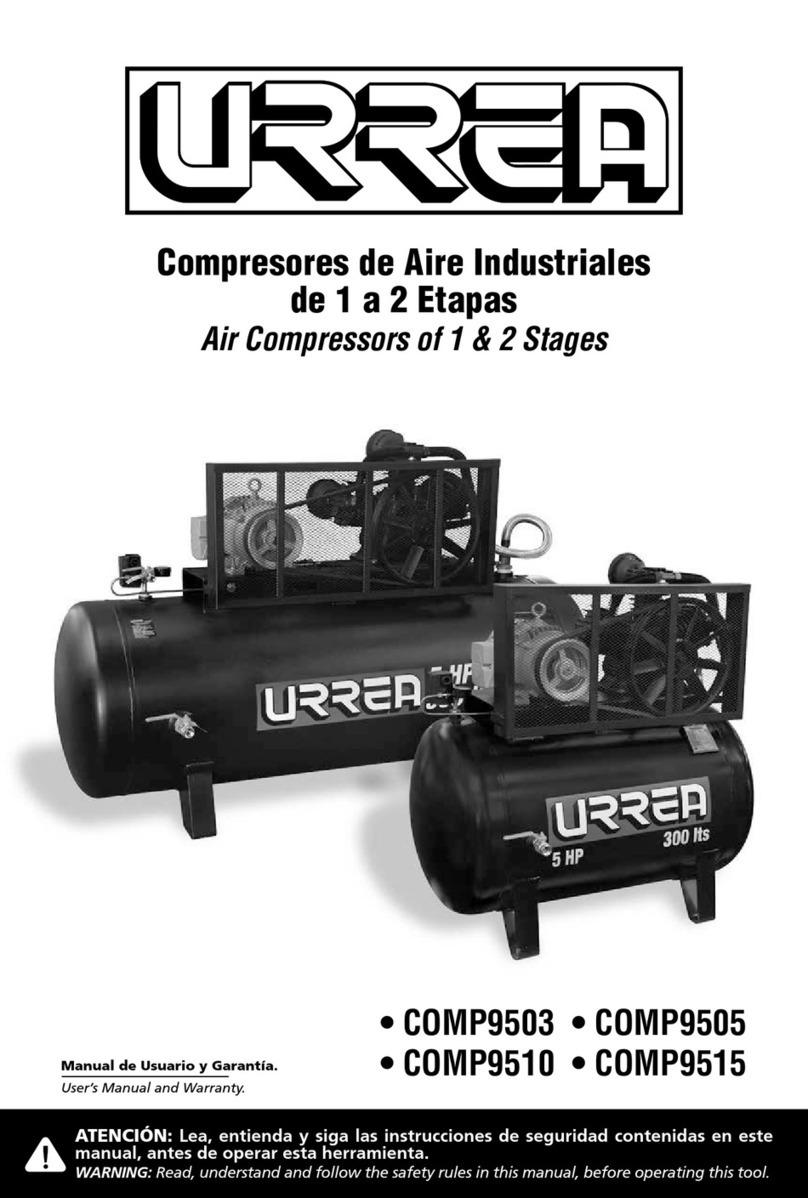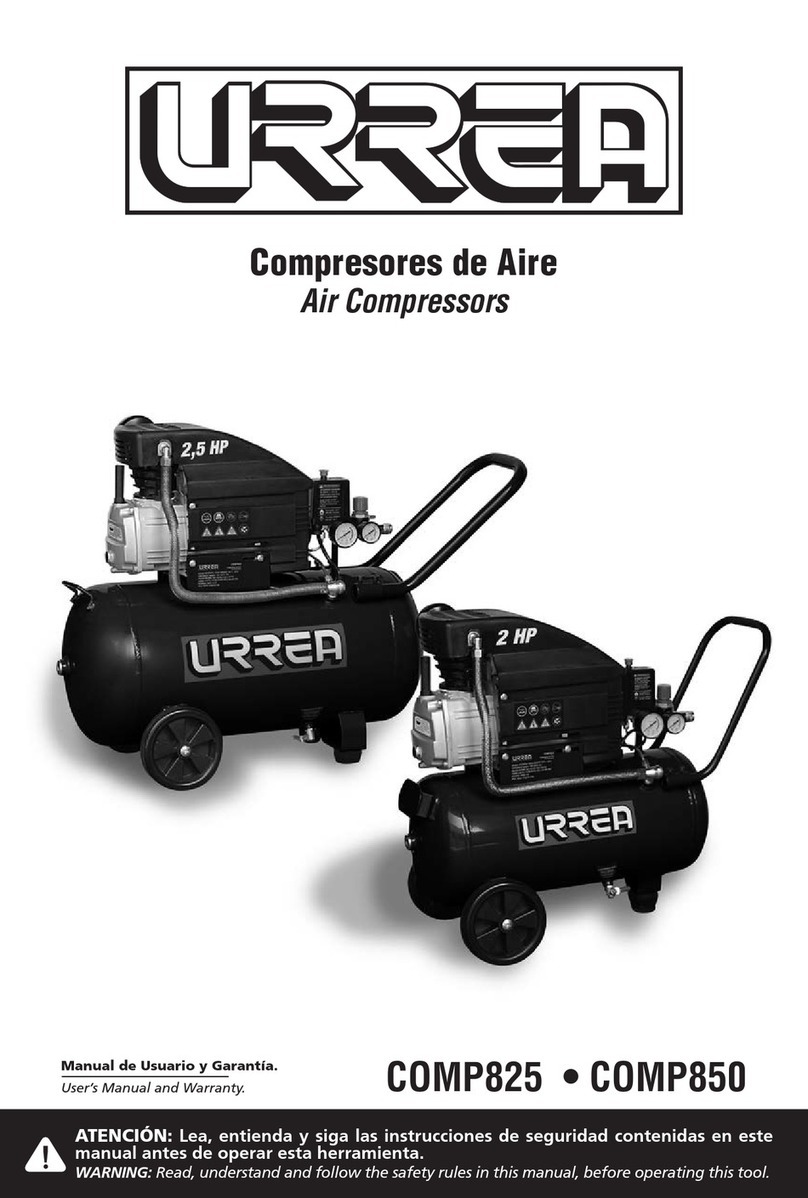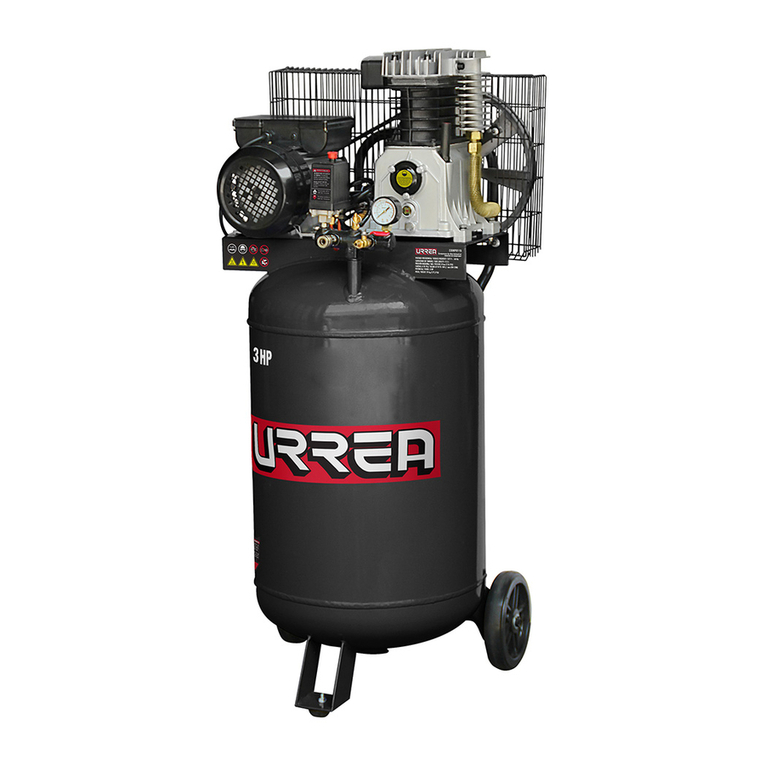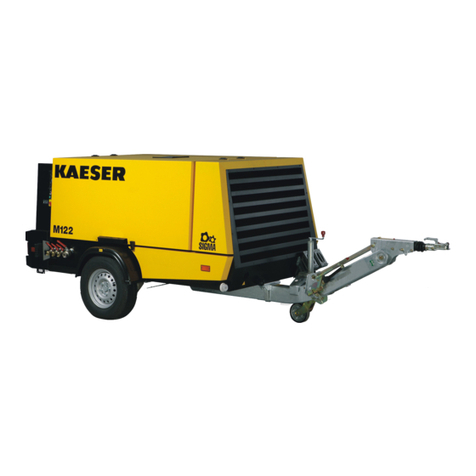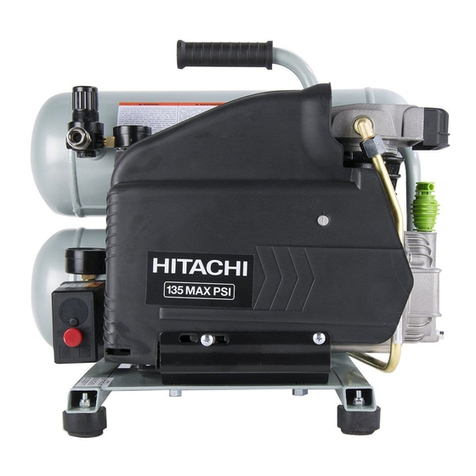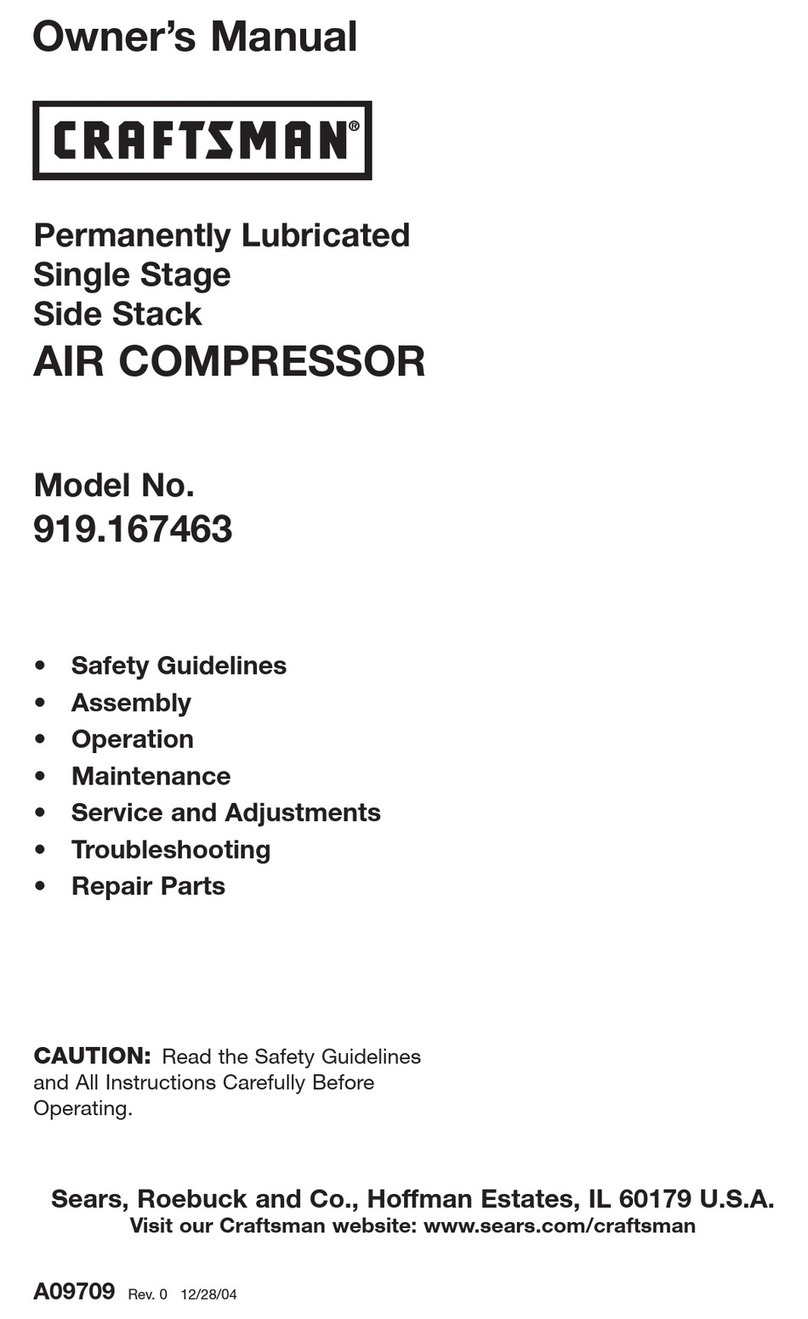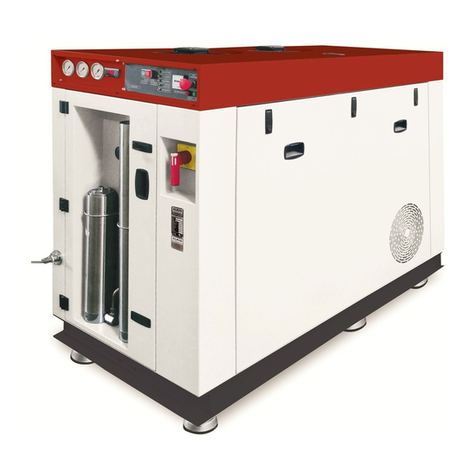
GENERAL SAFETY RULES
Your AIR COMPRESSOR has many features that
will make your job faster and easier. Safety,
performance and reliability have been given
top priority in the design of this tool, qualities
to make easy to maintain and to operate.
WARNING: Read and understand all in-
structions. Failure to follow all indications list-
ed below, may result in electric shock, fire and/
or serious personal injury.
SAVE THESE INSTRUCTIONS.
SAFETY IN WORKING AREA
Keep your work area clean and well lit. Clut-
tered benches and dark areas may cause acci-
dents.
Do not operate power tools in explosive atmo-
spheres, such as in the presence of flammable
liquids, gases or dust. Some power tools create
sparks which may provoke fire.
Keep away observers, children and visitors
while operating a power tool. Distractions can
cause you to lose control.
PERSONAL SAFETY
Stay alert, watch what you are doing and use
common sense when operating a power tool.
Don’t use the tool if you are tired or under the
influence of drugs, alcohol or medication. A
moment of inattention while operating power
tools may cause a serious personal injury.
Dress properly. Do not wear loose clothing
or jewelry. Contain long hair. Keep your hair,
clothing and gloves away of moving parts.
Loose clothes, jewelry or long hair can be
caught in moving parts.
Remove the adjusting keys or wrenches be-
fore turning the tool on. A wrench or a key
that is left close to a rotating part of the tool
may provoke a personal injury.
Do not overreach. Keep proper footing and
balance at all times. Proper footing and bal-
ance enables better control of the tools on un-
expected situations.
Use safety equipment. Always wear eye pro-
tection. Dust mask, nonskid safety shoes, hard
hat, or hearing protection must be used for ap-
propriate conditions.
AIR COMPRESSOR USE AND CARE
• For outdoor use only.
• Do not exceed the pressure rating of any
component in the system.
• Protect material lines and air lines from dam-
age or puncture. Keep hose away from sharp
objects, chemical spills, oil, solvents, and wet
floors.
• Check hoses for weak or worn condition be-
fore each use, making certain all connections
are secure. Do not use if defect is found. Pur-
chase a new hose or notify an authorized ser-
vice center for examination or repair.
• Release all pressures within the system slowly.
Dust and debris may be harmful.
• Store idle air compressors out of the reach
of children and other untrained persons. Air
compressors are dangerous in the hands of un-
trained users.
• Maintain air compressors with care. Follow
maintenance instructions. Properly maintained
products are easier to control.
• Check for misalignment or binding of moving
parts, breakage of parts, and any other condi-
tion that may affect the product’s operation.
If damaged, have the air compressor serviced
before using. Many accidents are caused by
poorly maintained products.
• Keep the exterior of the air compressor dry,
clean, and free from oil and grease. Always use
a clean cloth when cleaning. Never use brake
fluids, gasoline, petroleum-based products, or
any strong solvents to clean the unit. Following
this rule will reduce the risk of deterioration of
the enclosure plastic.
• Keep the engine free of grass, leaves, or
grease to reduce the chance of a fire hazard.
• Keep guards in place and in working order.
Never operate the tool with any guard or cover
removed. Make sure all guards are operating
properly before each use.
• Do not operate the engine in a conned
space where dangerous carbon monoxide
fumes can collect. Carbon monoxide, a color-
less, odorless, and extremely dangerous gas,
can cause unconsciousness or death.
• Keep the exhaust pipe free of foreign objects.
• Do not operate around dry brush, twigs,
cloth rags, or other flammable materials.
• Never pick up or carry a machine while the
engine is running.
10
COMP9100 manual.indd 10 28/05/15 14:35
